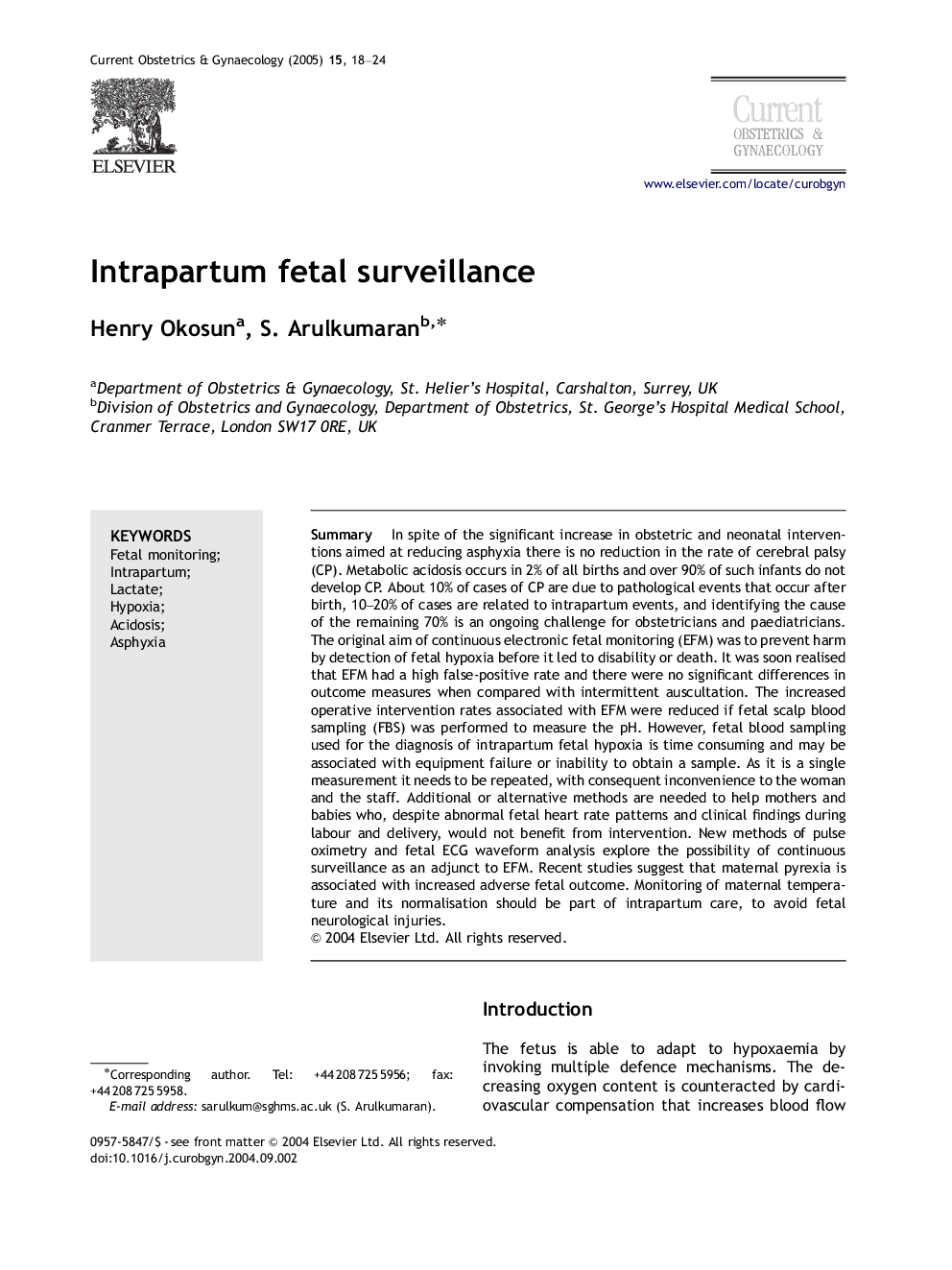| Article ID | Journal | Published Year | Pages | File Type |
|---|---|---|---|---|
| 9318419 | Current Obstetrics & Gynaecology | 2005 | 7 Pages |
Abstract
In spite of the significant increase in obstetric and neonatal interventions aimed at reducing asphyxia there is no reduction in the rate of cerebral palsy (CP). Metabolic acidosis occurs in 2% of all births and over 90% of such infants do not develop CP. About 10% of cases of CP are due to pathological events that occur after birth, 10-20% of cases are related to intrapartum events, and identifying the cause of the remaining 70% is an ongoing challenge for obstetricians and paediatricians. The original aim of continuous electronic fetal monitoring (EFM) was to prevent harm by detection of fetal hypoxia before it led to disability or death. It was soon realised that EFM had a high false-positive rate and there were no significant differences in outcome measures when compared with intermittent auscultation. The increased operative intervention rates associated with EFM were reduced if fetal scalp blood sampling (FBS) was performed to measure the pH. However, fetal blood sampling used for the diagnosis of intrapartum fetal hypoxia is time consuming and may be associated with equipment failure or inability to obtain a sample. As it is a single measurement it needs to be repeated, with consequent inconvenience to the woman and the staff. Additional or alternative methods are needed to help mothers and babies who, despite abnormal fetal heart rate patterns and clinical findings during labour and delivery, would not benefit from intervention. New methods of pulse oximetry and fetal ECG waveform analysis explore the possibility of continuous surveillance as an adjunct to EFM. Recent studies suggest that maternal pyrexia is associated with increased adverse fetal outcome. Monitoring of maternal temperature and its normalisation should be part of intrapartum care, to avoid fetal neurological injuries.
Related Topics
Health Sciences
Medicine and Dentistry
Obstetrics, Gynecology and Women's Health
Authors
Henry Okosun, S. Arulkumaran,
